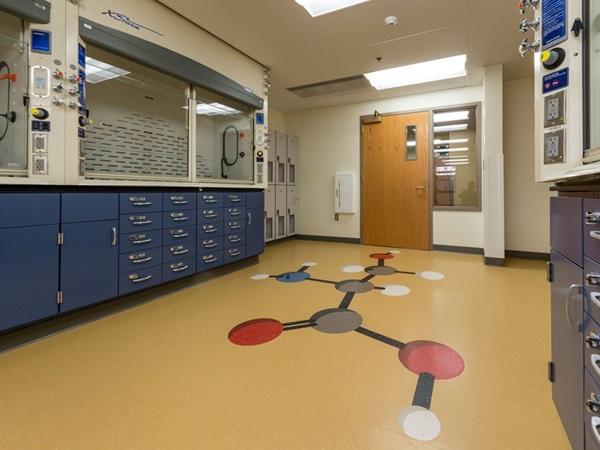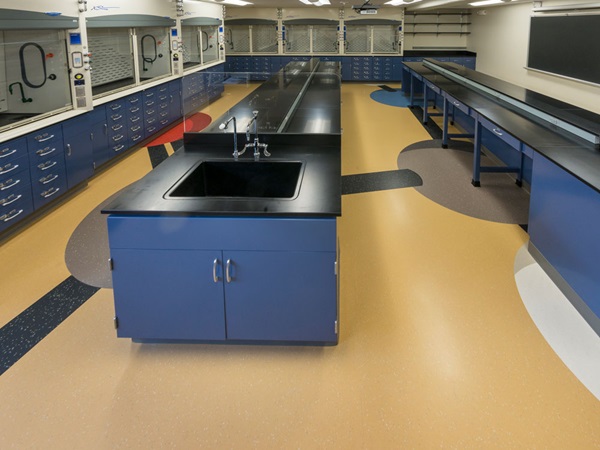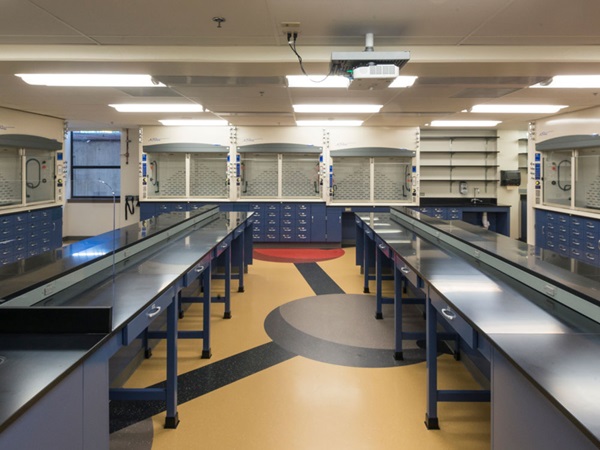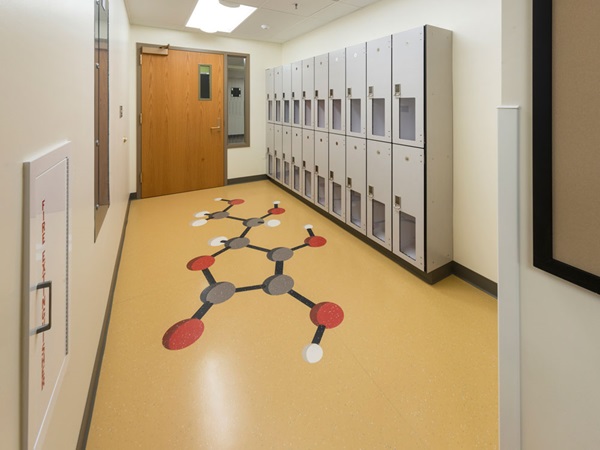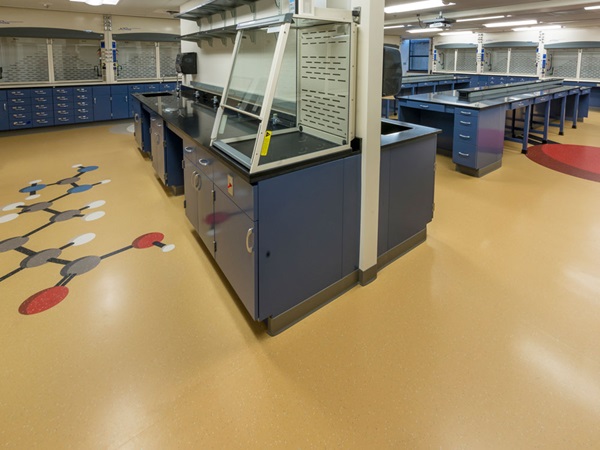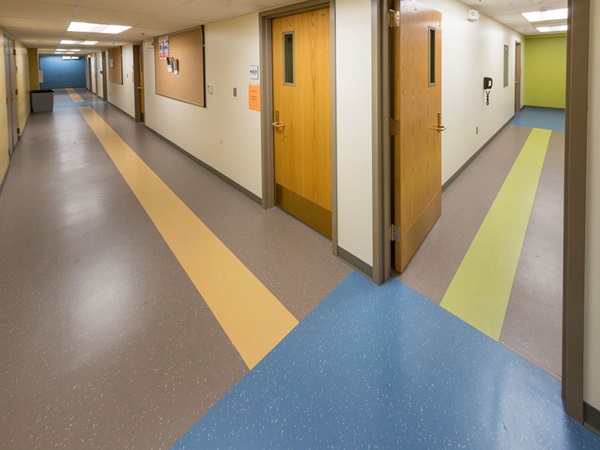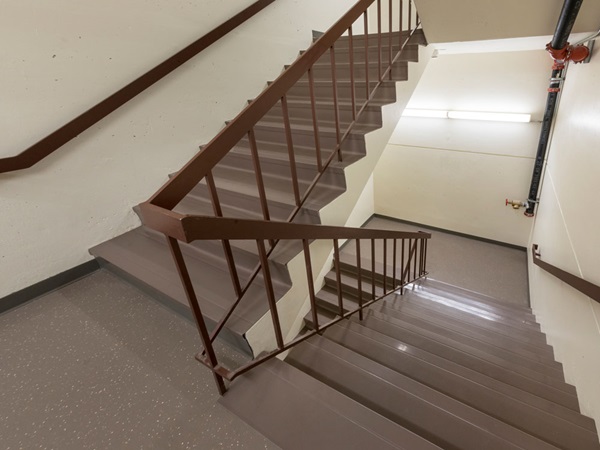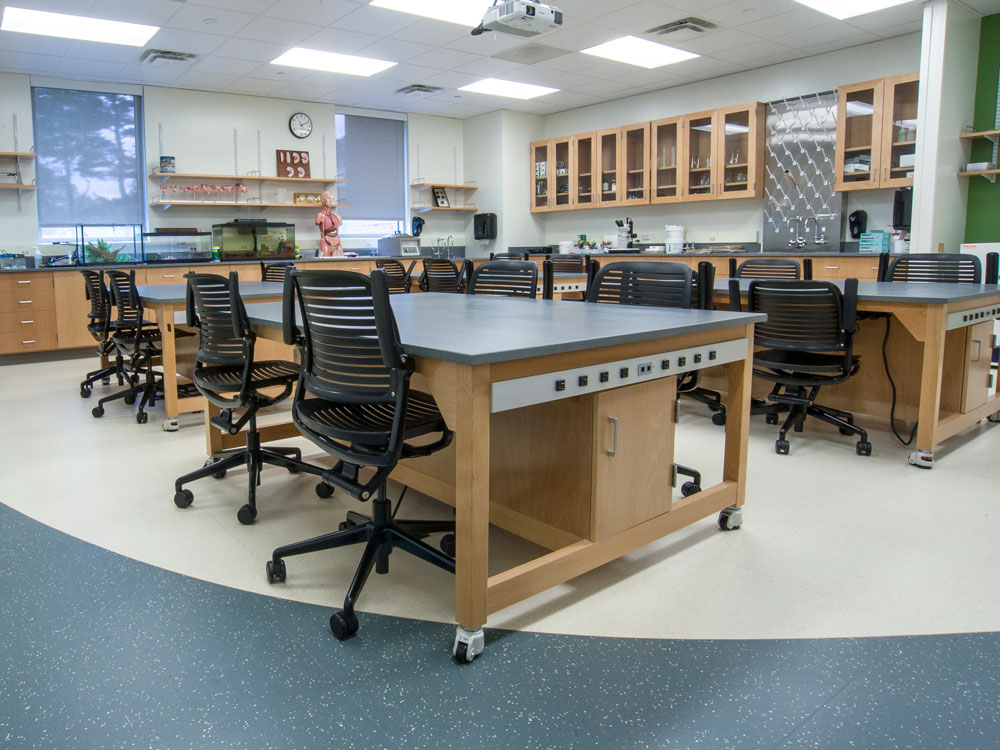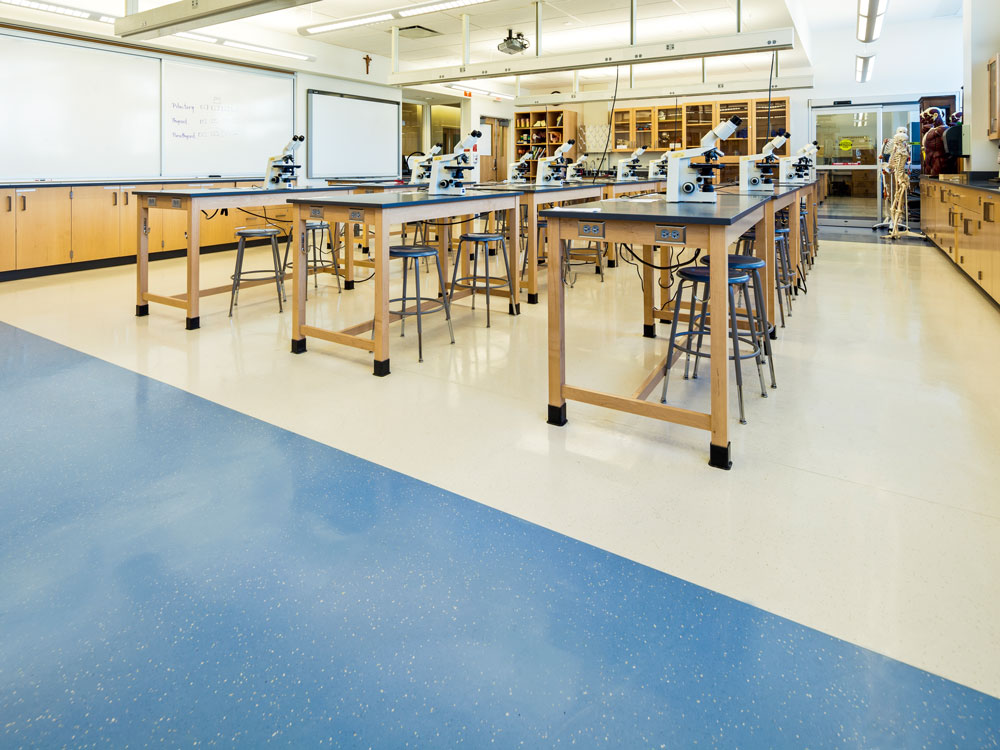When it came to selecting a new floor, Larry Hill, project manager, says, “We wanted something that was going to be durable, even after years and years of wear.” The university also required enhanced stain resistance, prompting the chemistry department to conduct its own stain testing on several different flooring samples. Hill shares, “That was the ultimate test - what stained the most or the least from commonly used lab chemicals - and based on that, we chose nora®.”
The University of Colorado’s Ekeley Sciences Building was originally erected in the 1970s and hadn’t been touched since. Outdated everything, from fume hoods to flooring, filled the space and inspired the university to create sustainable modern labs as part of the long-anticipated renovation.
“In this project, we were concerned about safety, slip and stain resistance, and comfort [versus the old concrete floor]. But ultimately, long-term maintainability and durability in a chemistry lab setting was the driving force for the selection of nora,” says Larry Hill, project manager. “We were spending a lot of money, and we knew it would be another 30 years before we could renovate again. So, we wanted it to last; we wanted it to be durable.”
Tad Koch, Ph.D., professor emeritus, further explains why nora was selected for its stain resistant properties, saying, “Chemicals that may get spilled in the course of a day include acetone, which the students use to rinse glassware, as well as acids and bases. Our lab director tested nora to see how resistant it was to the things that we commonly use in the organic lab, and it held up quite well.”
“Acoustics were also particularly important, because the labs are naturally noisy from the fume hoods,” adds Koch. “nora met that need better than anything else we looked at.” In addition to the labs, the flooring is important in other areas of the building, including recitation rooms and corridors. Denise Thomas, building manager, says, “We have a lot of activity with palettes and movements of carts going through our corridors. So having a floor that can withstand all that extra weight, movement and traffic is very important.”
With regard to maintenance, nora’s reduced regimen, requiring little more than water, represented a significant benefit to the university. “We have very limited funding on this campus for maintenance and custodial services. So, we try to stretch our dollars by using products that are easy to maintain and require fewer chemicals,” explains Hill.
Added cushion underfoot quickly impressed students and staff accustomed to the hard concrete floor in the old labs. “The new flooring seems a lot more forgiving on the knees,” says Jacqueline Richardson, Ph.D., director of the organic chemistry teaching labs. Hill mirrors her observation, adding, “I think it's much more comfortable, especially for users when they have long periods of lab use.” The university is pleased with the outcome. “This is a modern lab, so the safety and health of all the people who work and study in that space is just leaps and bounds beyond what it ever was before,” says Hill.

 Canada | English (US)
Canada | English (US)
